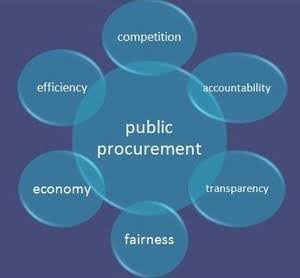Why in News: June 2025 GFR reforms: exemptions from GeM, higher purchase limits, and decentralised tender approvals to boost R&D procurement.

Introduction
- Public procurement is a critical lever for both transparency and innovation.
- India’s General Financial Rules (GFR) reforms (2025) mark a shift from rigid compliance to enabling research & innovation.
Evolution of Procurement Globally
1. Ancient to Modern – From Egyptian record-keeping to AI-enabled “cognitive procurement”.
2. Industrial Era – Primarily cost-control function; shifted during World Wars to strategic role.
3. Post-1945 – Used for sectoral development (semiconductors, renewables).
4. Contemporary Phase – AI-driven, mission-oriented, and innovation-shaping models.
Key Features of India’s Recent Reforms
- Exemptions from GeM for specialised R&D equipment → faster access, better quality.
- Raised direct purchase limit from ₹1 lakh to ₹2 lakh → quicker procurement cycles.
- Decentralised authority – Vice-Chancellors/Directors can approve global tenders up to ₹200 crore.
- Retention of checks – Departmental purchase committees for high-value items.
Significance of Reforms
- Aligns with catalytic procurement theory – procurement as a driver of innovation.
- Reduces bureaucratic lag, enhances time-to-lab efficiency.
- Empowers institutions while balancing accountability.
- Opens opportunities for early adoption of frontier technologies.
Global Best Practices & Lessons
1. Germany – High-Tech Strategy & KOINNO: mission-oriented procurement, innovation forums.
2. USA (SBIR Program) – 3% federal R&D funds reserved for startups; staged procurement contracts.
3. South Korea – “Pre-commercial procurement” paying premiums for prototypes.
4. EU – Joint Procurement Agreements for collective bargaining power.
Challenges Ahead
1. Direct purchase cap (₹2 lakh) inadequate for high-cost fields (quantum, biotech).
2. Risk of misuse if ethical standards of institutional heads are weak.
3. Overemphasis on global tenders may marginalise domestic suppliers.
4. Implementation gaps – monitoring, accountability, capacity building.
Way Forward: Systemic Shifts Needed
1. Outcome-weighted tenders – evaluate bids on cost + R&D potential + scalability.
2. Sandbox exemptions – IITs/TIFR bypass GFR partly if meeting innovation targets.
3. AI-augmented sourcing – INDIAai tools for catalogues, customs delays, material alternatives.
4. Co-procurement alliances – aggregate demand for expensive instruments across labs.
5. Hybrid models – CSIR labs adopt US-style public–private partnerships with performance-based contracts.
Conclusion
By adopting global best practices, leveraging AI tools, and ensuring robust accountability, India can transform procurement into an accelerant of scientific research rather than its bottleneck.
UPSC Relevance
GS Paper 2 (Governance): Institutional reforms, transparency vs. efficiency in procurement.
Mains Practice Question
Q. “Public procurement, when reimagined, can shift from being a compliance mechanism to a catalyst for innovation.” Critically examine the recent procurement reforms in India in this light, drawing global comparisons. (250 words)
